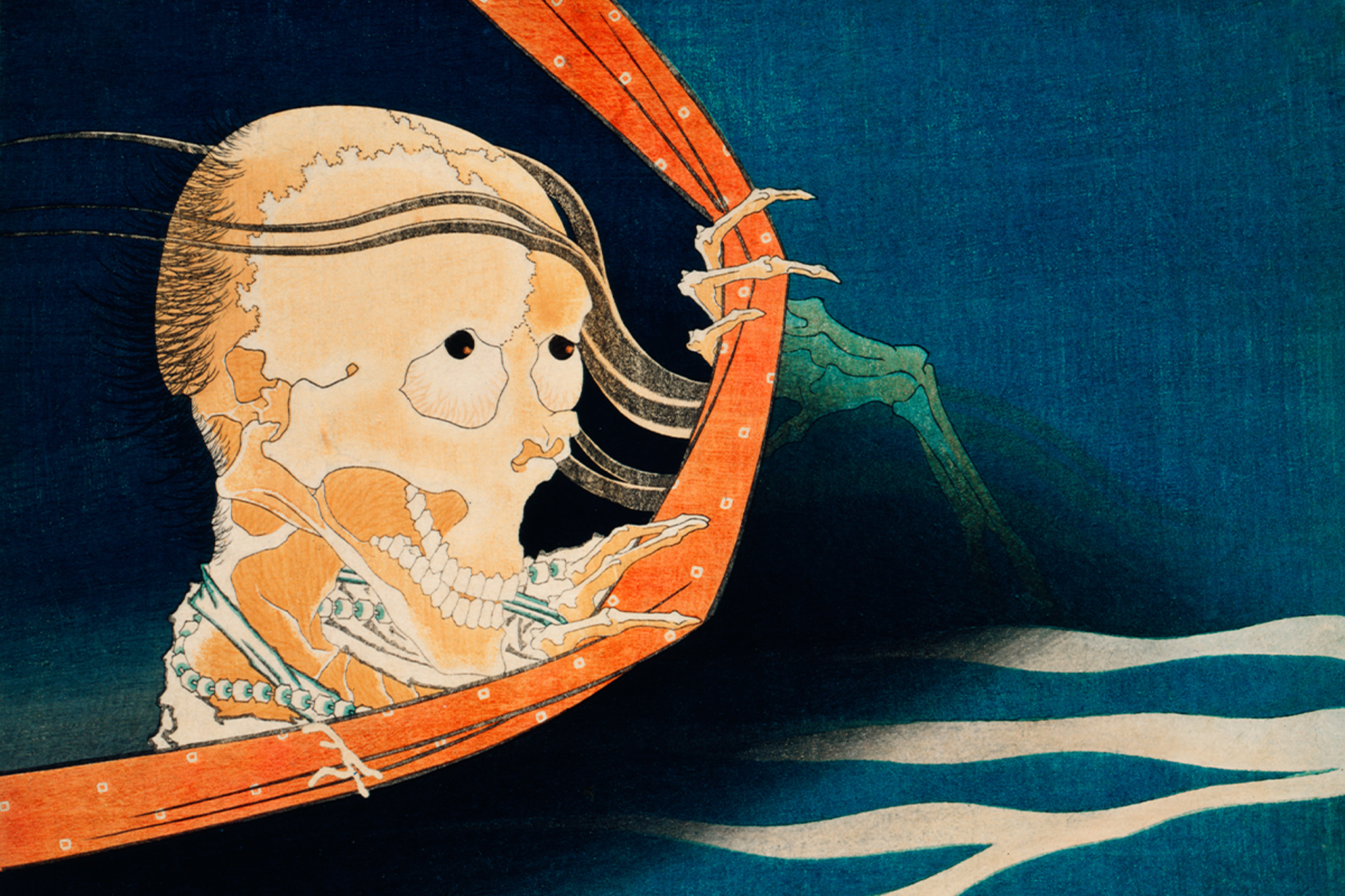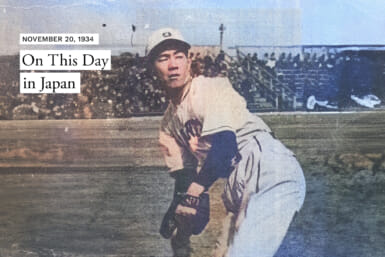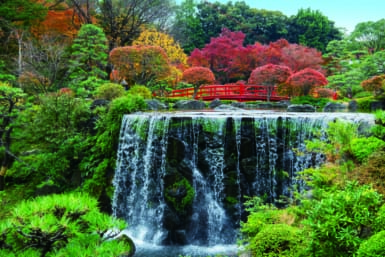Ah, the Japanese summer. The season of sweat, fireworks and death. Frankly, I could do without the first two, but Japan’s views on death are much harder to hate.
In Shinto mythology, when a person shifts from their mortal coil, they begin the disembodied journey to Yomi-no-kuni, the Land of the Dead. What awaits is neither eternal punishment nor paradise. Rather, it’s a plane in which the soul simply resides. But it may not take up residence there permanently. The boundary between our world and the world of the kami, or spirits, is ill-defined and flimsy as a sheet of nori seaweed.
Buddhists, in their wonderfully perverse way, view death as liberation from the suffering of life; mere interludes on the continuous journey of the soul through its cycle of reincarnations. In the Japanese tradition, if one is to reach the Pure Land, one must cross the River of Three Crossings by a bridge, a ford or over a stretch of snake-infested waters — depending on the level of one’s earthly excesses — and hope the correct fee has been placed within the cremation casket.
It’s common for these traveling souls to get snagged along the way. And the unlucky ones who fail to complete their journey transmogrify into one of the many ghostly visions populating the folktales of old. They could return as a yurei or yokai, which are akin to the Western interpretation of ghosts, or as a benevolent ubume, a deceased mother yearning to look after her children. They could just as easily have nefarious intentions; perhaps as an onryo (vengeful female spirit), a goryo (martyr hellbent on revenge), a zashiki-warashi (mischievous child ghost), or a funayurei (deceased sailor hoping to drown other seafaring travelers).
This is to say that ghosts are never far from the Japanese imagination. And in summer, the country becomes keenly aware of it. You’re likely familiar with the ancestral spirits that revisit our material plane during Obon. But there are other ways to channel the fallen back on earth, such as the popular 17th-century parlor game, Hyakumonogatari Kaidankai, or the Gathering of 100 Supernatural Tales.
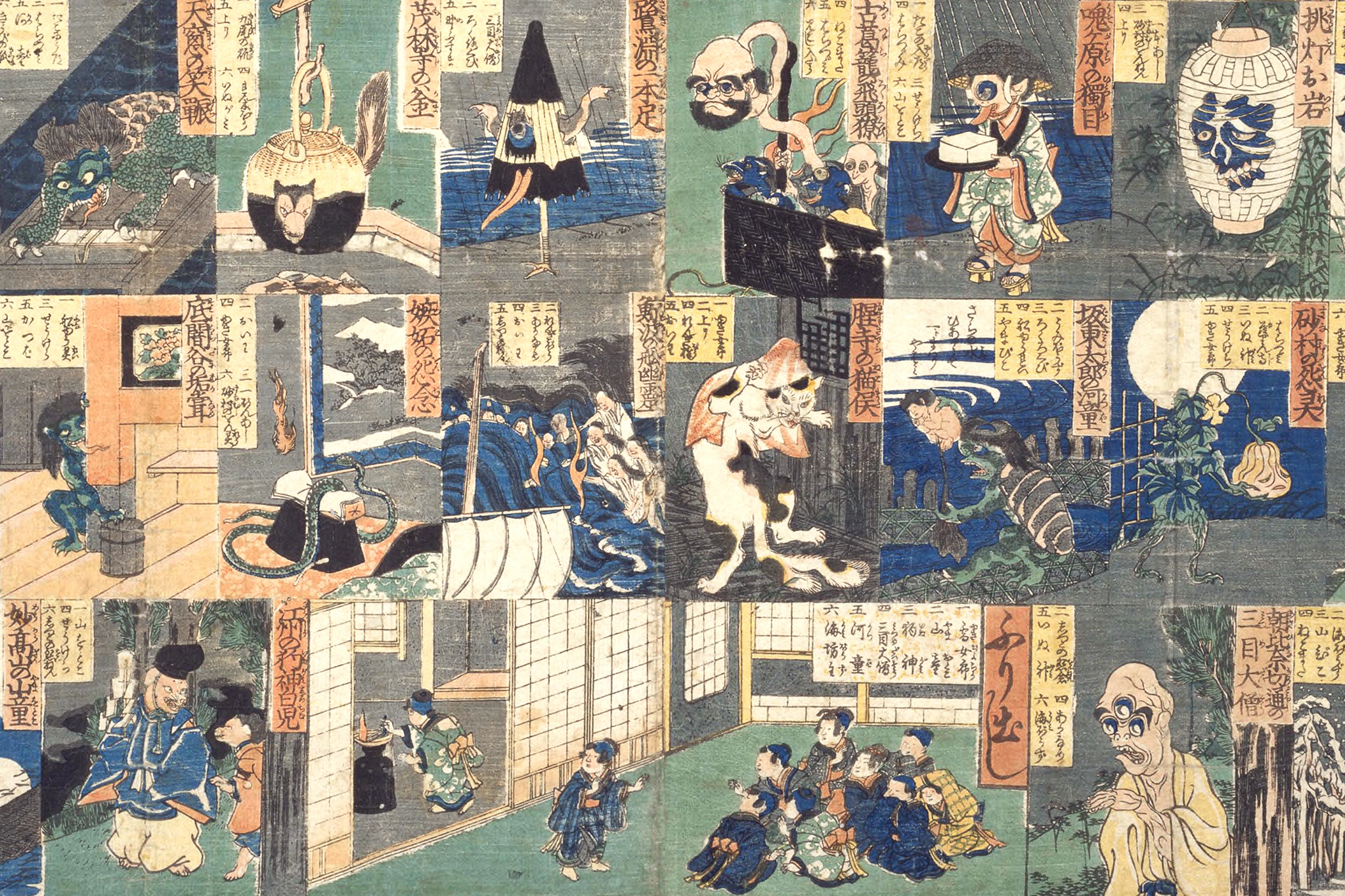
Stories from Beyond the Grave
In the 1600s, there was little one could do to stave off the oppressive summer heat, so the Japanese sought reprieve by night. As the sun dipped behind the horizon and dusk settled across the land, the conditions for Hyakumonogatari Kaidankai were just right.
The game had a simple premise: 100 people would gather in a room come nightfall, each armed with a kaidan, a story of strange or supernatural origin, and a lit candle. One person would tell their story then extinguish a candle, clouding the room in further darkness. This would continue, story by story, candle by candle, until the entire room was enveloped in the black of night — but only if the participants allowed it to get that far. It was common when alighting upon the final story, if not earlier, for players to call a stop to proceedings for fear it would invoke the spirits animating their tales.
It all might sound a little primitive by today’s standards, in which stories from beyond the grave are treated with immediate skepticism. But those kaidan that were intended to be scary — as not all kaidan were — remain as unnerving as ever. The thought of a yuki-onna (lady snow apparition) prowling the wintry forests, of Okiku haunting the well at Himeji Castle, or a noppera-bo (faceless ghost) walking along the banks of the old Akasaka Road in Tokyo still probes the darkest recesses of the mind.
The Legacy of Hyakumonogatari Kaidankai
Historical records suggest Hyakumonogatari Kaidankai was first used by samurai as a test of courage. But word of its existence soon spread until it was played by people of all classes across the archipelago. It makes sense, given the low entry barrier to the game — all players needed was a candle and a dash of creativity.
Of course, Hyakumonogatari Kaidankai was a source of entertainment and encouraged people to embrace that most human of traits: the desire to share stories. It also had a religious dimension, allowing people to tap into the spirit world underpinning the prevailing belief systems of the day. As to whether they really believed the tales, it’s anybody’s guess. But as the great supernaturalist Lafcadio Hearn would attest, a kaidan’s veracity is immaterial, because “the ghostly represents always some shadow of the truth.”
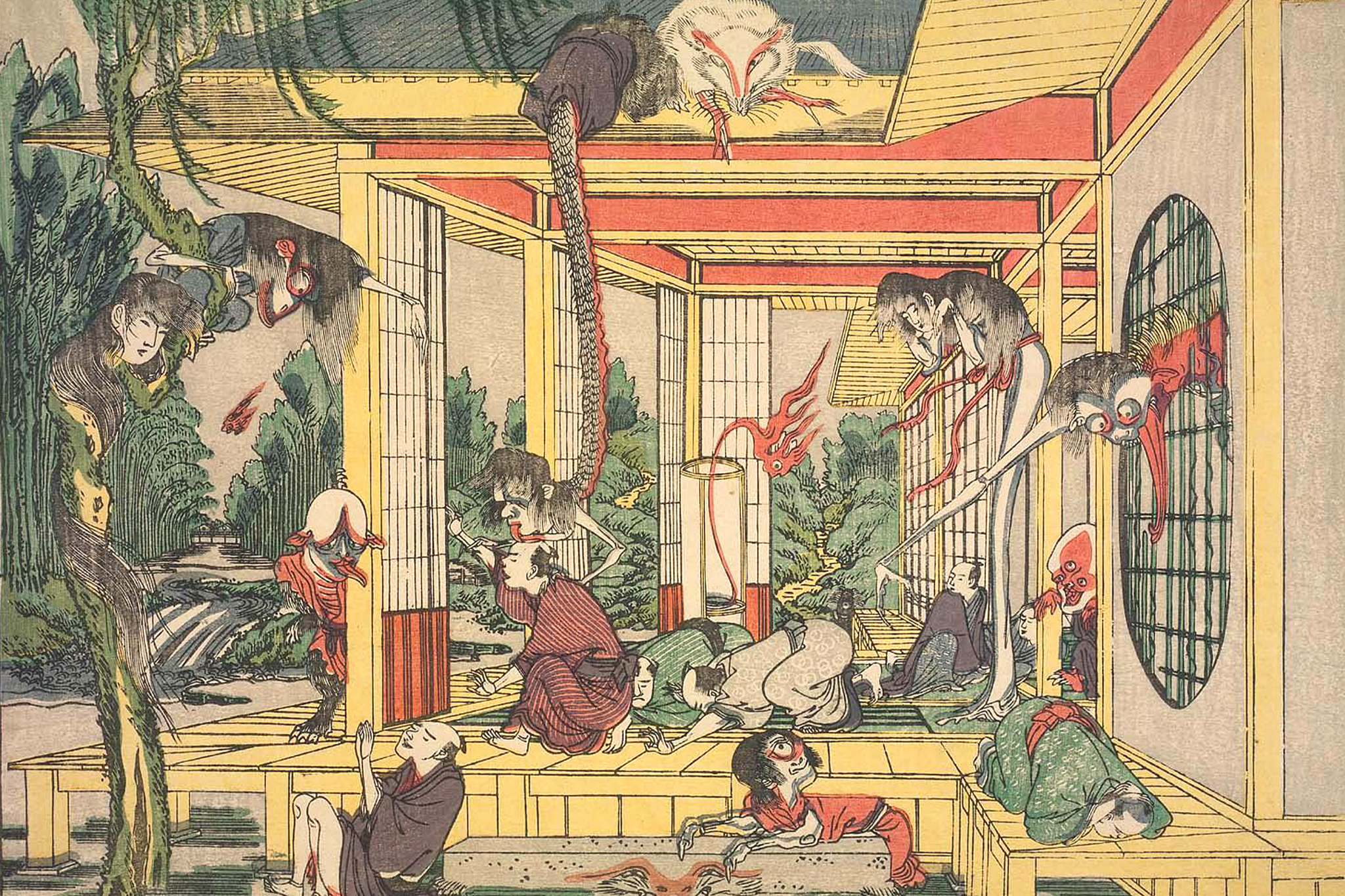
Hearn would have relished playing Hyakumonogatari Kaidankai, no doubt, and even attributes some of the stories in Kwaidan — widely considered his magnum opus — to one of the Hyaku-Monogatari books published to capitalize on the country’s fascination with the game. As its popularity grew, stories became commodities, sending kaidan enthusiasts into pine-choked forests and along moonlit coastal trails in search of strange experiences they could recount at the next storytelling event — or better yet, sell to avid players of the game. The ramblings of a provincial pauper or superstition circulating in the hinterlands became prized pieces of intellectual property.
Granted, it’s not common in modern Japan to be invited to a Gathering of 100 Supernatural Tales. But its legacy continues, nonetheless. Not only because stories of yokai and yurei remain firmly embedded in the pop culture zeitgeist, but also through commercial products like Candle Game: Kaidankai, which features rules of play and folktales gathered by Hearn at the turn of the 20th century.
Halloween may feel like an appropriate time for Hyakumonogatari Kaidankai. But should you want to play it, do yourself a favor and try it during the Japanese summer, when screeching cicadas and cloying humidity herald the spirit world coming to life.

